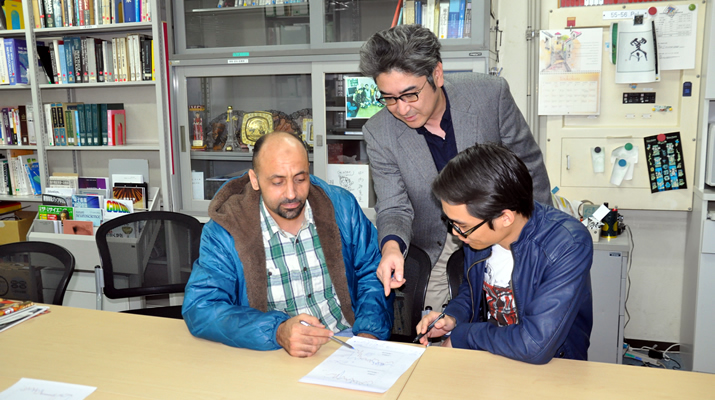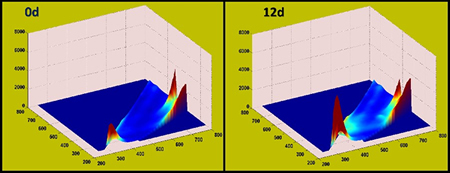
ここからコンテンツです。

Non-destructive sensing of fish freshness
Is there any reliable way to know whether frozen fish is fresh or not? By Gamal ElMasry
Gamal ElMasry and his colleagues, in cooperation with Tokyo University of Marine Science and Technology and the National Food Research Institute have demonstrated that the autofluorescence spectroscopy associated with statistical multivariate modeling has a high potential in non-invasive sensing of fish freshness in the frozen state. This work is the first in a series of research endeavours to establish an intelligent system for objective estimation of various properties of frozen food.
In Japan, freshness is the fundamental and crucial determinant of acceptability and pricing on the market because the valuable and prime fresh fish product is typically suitable to be eaten raw in the form of ‘Sashimi’ and ‘Sushi’. Unfortunately, the critical estimation of the freshness of frozen seafood products is extremely hard to achieve. Thus, determining the initial freshness of fishery products before they are frozen is a big challenge.

freshness conditions of frozen fish
The ordinary way to determine fish freshness is by calculating K-values based on chemical assays of nucleotides compounds, however, this method is very time-consuming.
Professor Emiko Okazaki stated that “we need couple of hours of intensive works to identify whether a fish sample was fresh before being frozen or not”. “It would be of great interest to find an alternative tool to shorten this very prolonged time of analysis.
Therefore, the development of a smart, rapid and reliable method is urgently needed in research and industry”, she added.

(EEMS) of frozen fish
The first author Dr. Gamal ElMasry, a JSPS fellow from Egypt said "As the fluorescence signals from the frozen fish we examined changed dramatically with their initial freshness conditions (Figure 1), autofluorescence spectroscopy as an interesting sensor technology characterized by high sensitivity and accuracy makes this method a substantial and promising tool in the screening of fishery products, even in their frozen state. In other words, changes occurred in the fluorescent-emitting molecules during the degradation of aged fish before the freezing process could be tracked using its fluorescence signals"
Currently, this research team is working on the first step of developing such a system by analyzing excitation-emission matrices (EEMS) of frozen fish of different freshness conditions and measuring their reference freshness values by high-pressure liquid chromatography (HPLC).
"We have found that there are some specific excitation wavelengths at which the detection of the freshness of frozen fish could be easily recognized. The problem is to identify the most efficient emission wavelengths to move the application forward towards the real-time mode for on-line applications", explains Professor Shigeki Nakauchi.
This study was supported by the Japan Society for the Promotion of Science (JSPS).
References
Gamal ElMasry and Shigeki Nakauchi (2015). Prediction of meat spectral patterns based on optical properties and concentrations of the major constituents, Food Science & Nutrition. doi: 10.1002/fsn3.286
Gamal ElMasry, Hiroto Nagai, Keisuke Moria, Naho Nakazawa, Mizuki Tsuta, Junichi Sugiyama, Emiko Okazaki, and Shigeki Nakauchi (2015). Freshness Estimation of Intact Frozen Fish Using Fluorescence Spectroscopy and Chemometrics of Excitation-Emission Matrix. Talanta 143, 145-156.
Researcher Profile

| Name | Gamal ElMasry |
|---|---|
| Affiliation | Department of Computer Science and Engineering Current: Suez Canal University, Faculty of Agriculture, Agricultural Engineering Department |
| Title | Research Fellow of the Japan Society for the Promotion of Science Current: Associate professor |
| Fields of Research | Food Engineering, Agrophysics, Agricultural Engineering |
ここでコンテンツ終わりです。
